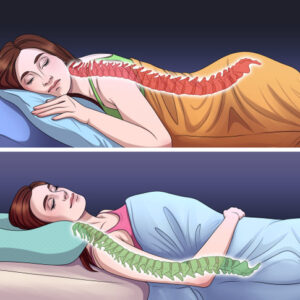As always at this time of year, store shelves are spoiling us with an abundant choice of summer shoes for every taste — be it in terms of form, color, or price.
But, aspiring to look beautiful, one should also remember about health, convenience, and foot hygiene.
We at Usa-People decided to help you make the right choice by preparing an illustrated guide to the common mistakes people make when choosing shoes for warm weather!
10. The sole is too narrow.

Wearing shoes whose soles are too narrow for your feet creates an unsightly impression.
In addition, this can contribute to the deformation of the leg joints and lead to the appearance of bunions on the big toes.
Narrow shoes often cause ingrown toenails as well as skin irritation, which leads to the formation of corns.
9. The wrong fit in the instep area.

When the fit is wrong, the curve of the foot and the curve of the shoe sole don’t match. As a result, your foot isn’t resting on the entire shoe surface but on its two outermost points only:
the one under the heel and the one under the ball of the foot. Wearing such shoes causes blood circulation problems and leads to the formation of corns, excessive sweating, and leg pains.
8. The sole is longer than the foot.

Excessively long soles are a common feature of flip flops and sandals, the kind that has a strap passing between the toes. With such shoes, the distance between the tips of the toes and the forward edge of the sole is usually too wide for comfort.
The normal distance should be no more than 0.4 inches. This constitutes the foot’s margin of freedom inside the shoe.
When the margin is too big, walking becomes awkward and unsafe — something that can provoke tissue and joint diseases. Moreover, you run the risk of tripping while climbing the stairs.
7. The sole is too short.

With sandals, when the sole is too short you have to constantly support the shoes with your toes so they don’t fall off.
This means that the muscles remain tensed all the time, with the load on the foot distributed unevenly.
Also, you run the risk of snapping a heel and suffering a nasty injury. When trying on new shoes, don’t forget to orient on the forwardmost point of the foot.
6. The shoes fit too loosely.

When your shoes fit too loosely, pretty much the only thing that keeps them from falling off is your toes. Consequently, the leg muscles get overworked, which can give you an unsightly shuffling gait.
Moreover, wearing such shoes can lead to toe and joint deformations, the appearance of calluses, and knee and back pains.
5. The shoes are too big.

When you’re wearing shoes that are too big, each time you lift your leg you tense the muscles to prevent the shoe from falling off.
This can easily make you stumble and lose balance. Shoes whose size is too large are just as harmful as those that fit too tightly and are most likely to cause corns.
4. Shoes made from unnatural materials.

In summer months, it is particularly advisable to wear shoes made from natural materials, such as leather or textiles.
Wearing fake leather shoes in warm weather can be hazardous to your health, since high temperatures cause the various chemical components to interact with the skin.
Besides, such shoes have poor foot ventilation, which can lead to fungal infections, chafing, and lesions.
3. Wearing patent leather shoes.

During the hottest time of the year, it’s best to refrain from wearing patent leather shoes on a daily basis. Such shoes don’t have a good track record when it comes to air circulation and moisture absorption.
Moreover, these shoes are susceptible to mechanical damage and temperature changes (they tend to crack when the thermometer drops to 14°F or rises above 77°F).
2. Wearing closed shoes barefoot.

In the summer, wearing closed shoes (such as moccasins and loafers) barefoot leads to heavy sweating and coarsens the skin on the heels.
It is advisable to wear such shoes with socks. If the weather is too warm for ordinary socks, use no-show liner socks.
1. Wearing flat-soled shoes.

Wearing flat-soled shoes for more than 1-2 hours a day can harm your health. Such footwear is not designed to soften the impact of the heel against the walking surface, which means your skeleton receives a microtrauma with every step.
Another drawback is that your legs remain in a state of constant tension, which increases the risk of sprains and other injuries.
Also, your body weight is not distributed evenly along the foot.
You can greatly reduce these damaging effects by using orthotic insoles, but your best choice for everyday wear would still be shoes that hold their shape, with a heel of 0.8-1.5 inches.

